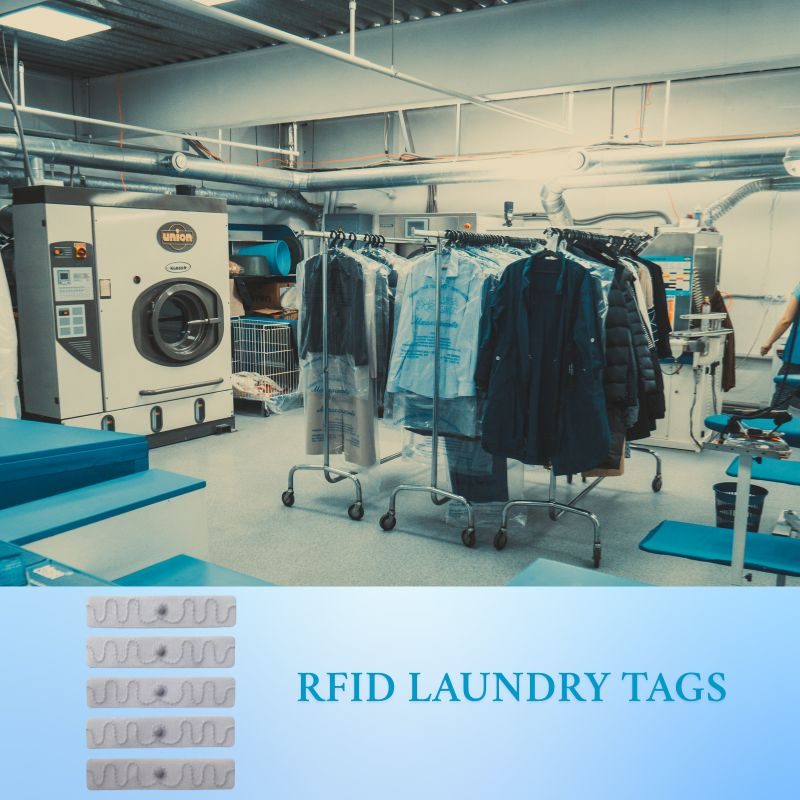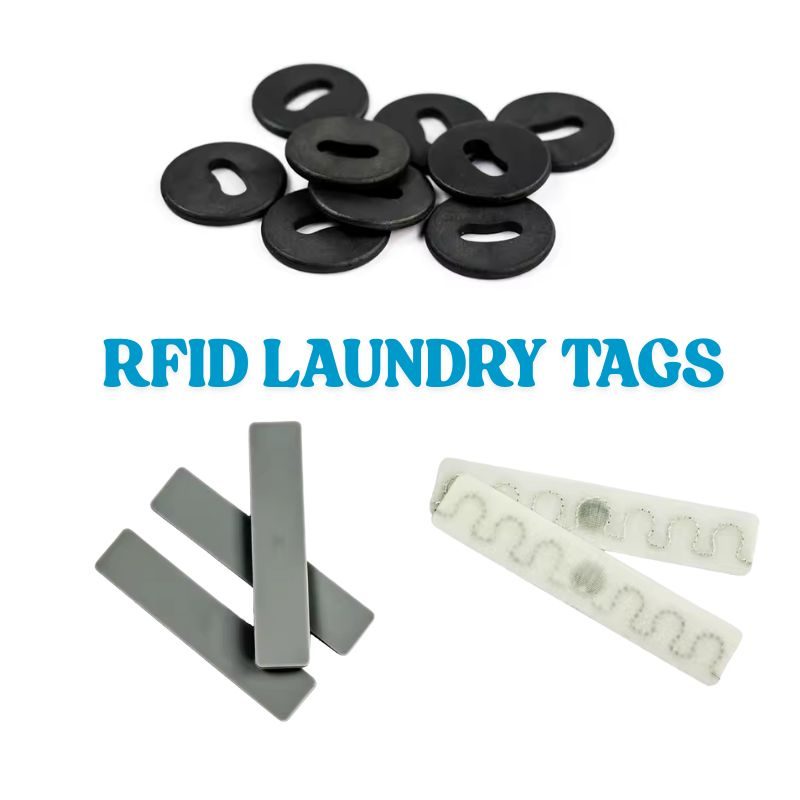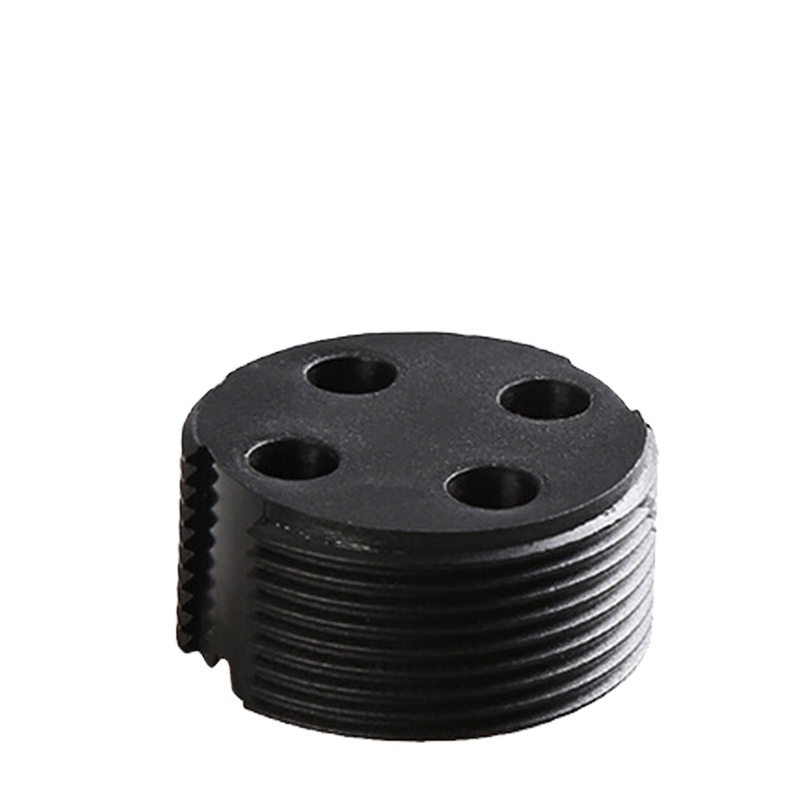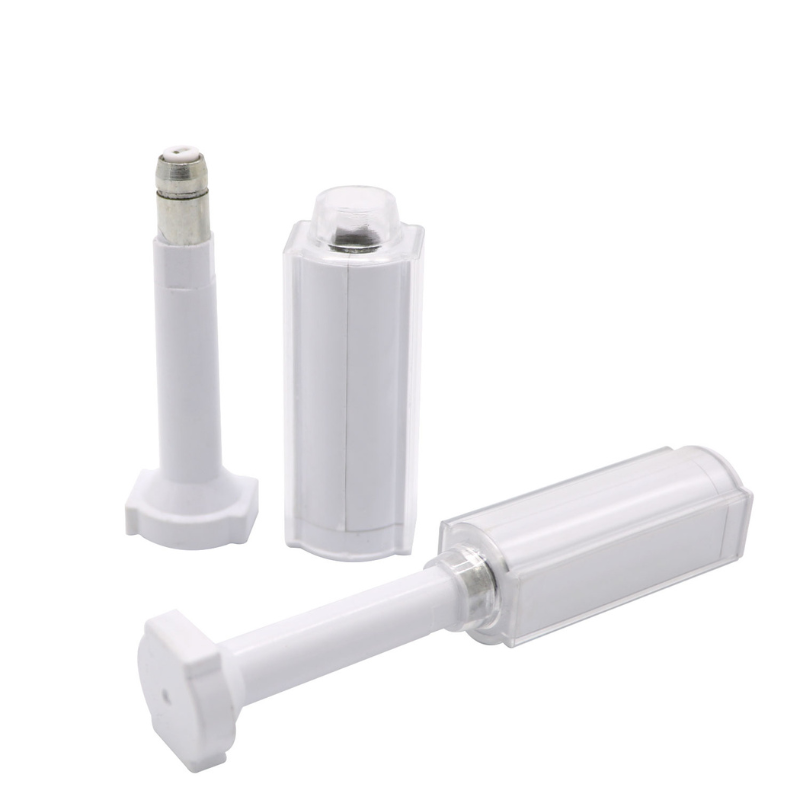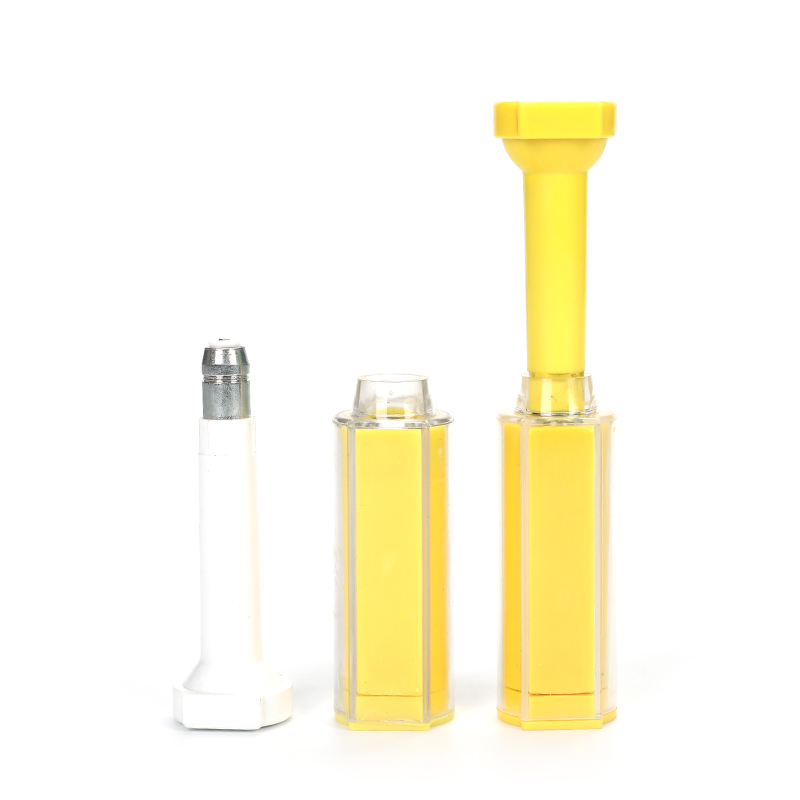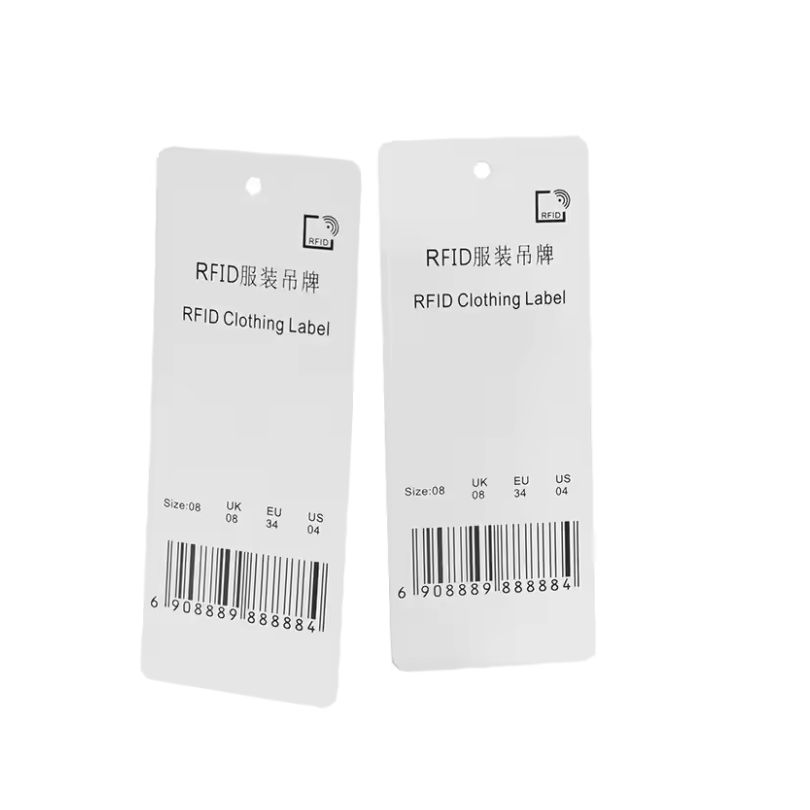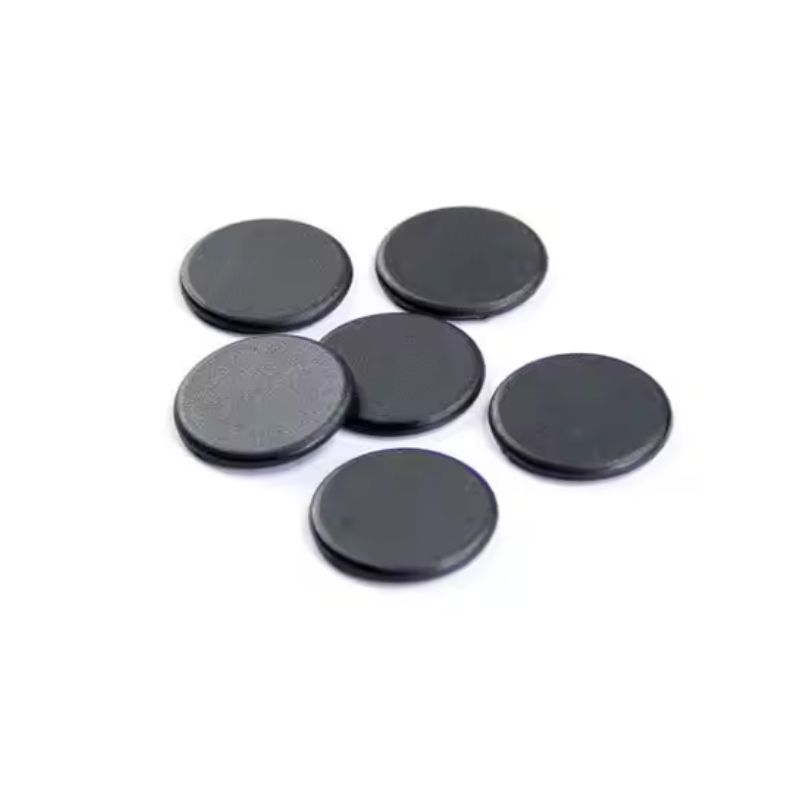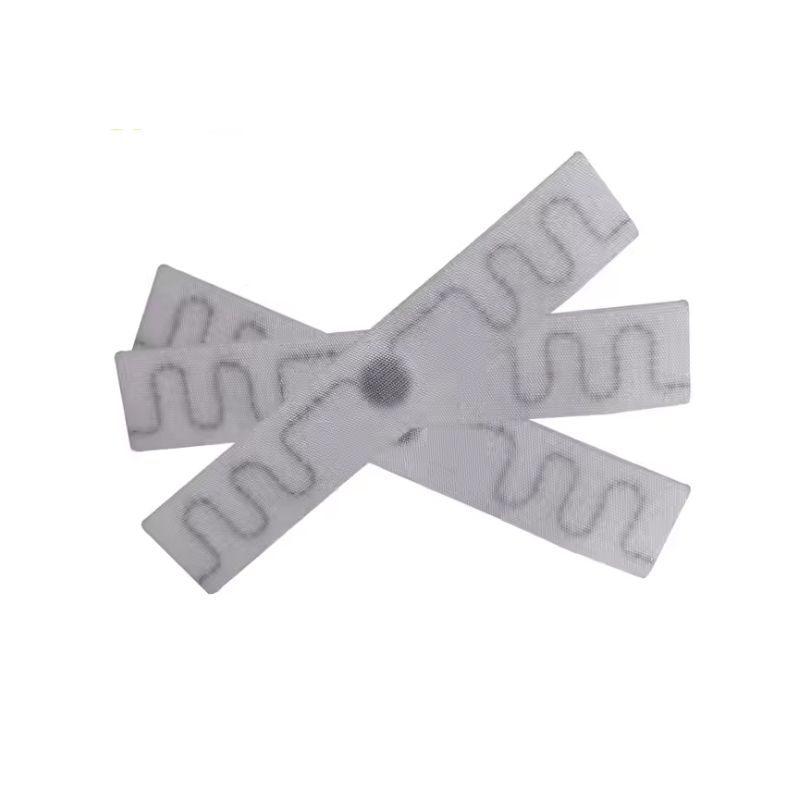
Come utilizzare le etichette RFID per il bucato: Guida completa all'installazione, alle applicazioni e ai vantaggi
- Zhou, Ray
- 01/04/2025
Sommario
Introduzione
Queste etichette, piccole ma potenti, aiutano a tracciare la posizione di ogni articolo, la cronologia di utilizzo e il ciclo di pulizia senza alcuno sforzo manuale. Costruite per sopravvivere a oltre 200 cicli industriali di lavaggio e asciugatura, Etichette RFID per lavanderia sono impermeabili, resistenti al calore e agli agenti chimici. Sono ideali per gestire grandi volumi di tessuti, prevenire i furti e garantire l'efficienza operativa.
In questo articolo tratteremo:
- Come installare Etichette RFID per lavanderia (con quattro metodi diversi).
- I settori chiave che utilizzano i tag RFID per la biancheria e i vantaggi misurabili.
- Come leggere le etichette RFID della lavanderia con sistemi fissi e mobili.
- Consigli pratici per massimizzare il ROI della tracciabilità della biancheria RFID.
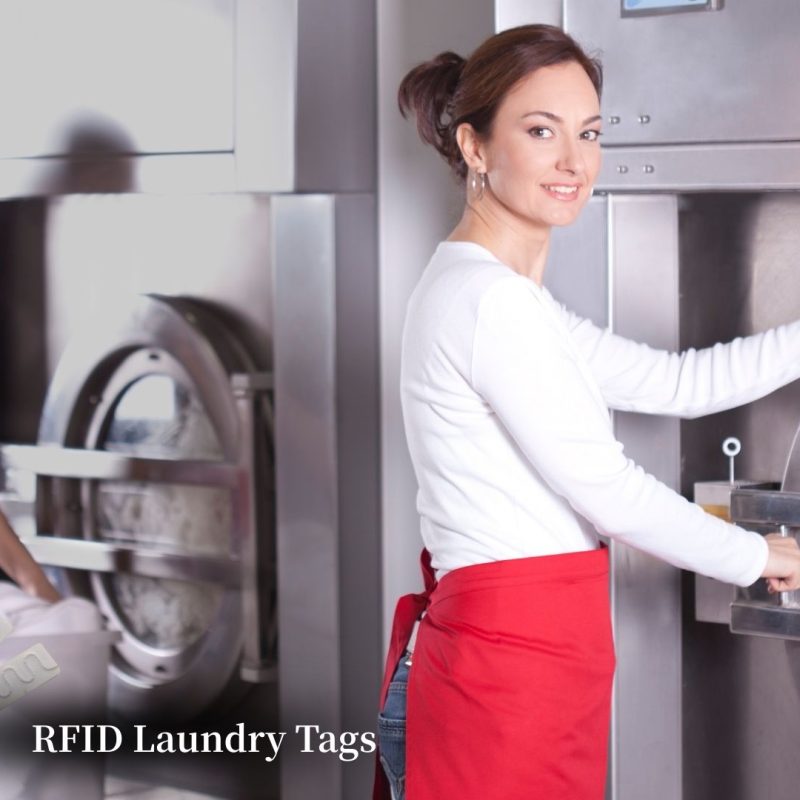
Come applicare le etichette RFID per il bucato
Una corretta installazione è fondamentale per garantire prestazioni e durata. A seconda del tipo di tessuto, del valore dell'articolo e delle esigenze operative, è possibile scegliere tra diversi metodi di installazione collaudati.
1. Metodo di saldatura a caldo
Per gli indumenti in cui la cucitura non è pratica, l'installazione della termosaldatura offre una soluzione rapida e resistente alle manomissioni.
- Processo: Utilizzare una pressa a caldo per incollare un Etichetta RFID termosaldabile per biancheria al tessuto.
- Vantaggi: Forte adesione, legame impermeabile e nessun danno al tessuto.
- Ideale per: Asciugamani, indumenti da lavoro e capi di biancheria ad alto volume.
- Un consiglio da professionista: Scegliete etichette termosaldate con adesivi testati per il lavaggio industriale.
Guardate il nostro video sul processo di termosaldatura:
2. Metodo di installazione con cucitura
Questo è il modo più comune e affidabile per applicare le etichette RFID per la biancheria.
- Processo: Cucire l'etichetta nell'orlo, nella cucitura o nell'area dell'etichetta dell'indumento.
- Materiali: Cartellini tessili in poliestere di alta qualità o cartellini a bottone in PPS.
- Vantaggi: Integrazione discreta e fissaggio sicuro che resiste ai lavaggi frequenti.
- Nota: Evitare di cucire attraverso l'antenna o il chip per evitare di danneggiarli.
Esempio: Gli hotel cuciono le etichette nelle federe e nei copripiumini per garantire una tracciabilità invisibile.
3. Metodo tascabile
Quando non è possibile cucire direttamente l'etichetta, il metodo della tasca è una scelta intelligente.
- Processo: Posizionare l'etichetta RFID all'interno di una piccola custodia protettiva in tessuto, quindi cucire la custodia all'interno dell'indumento.
- Vantaggi: Protegge l'etichetta dall'abrasione e la nasconde alla vista.
- Ideale per: Uniformi multistrato, tessuti delicati o articoli in cui il marchio è importante.
📌 Esempio: Ospedali che si nascondono Tag RFID PPS all'interno della fodera dei camici dei pazienti.
4. Metodo di appendimento
Ideale per etichette temporanee o per articoli non adatti al calore o alla cucitura.
- Processo: Fissare l'etichetta con un cappio, un cordoncino o un foro per l'occhiello.
- Vantaggi: Facile rimozione, uso flessibile per gli indumenti a noleggio.
- Ideale per: Costumi teatrali, biancheria per eventi speciali o inventario a rotazione.
Applicazioni chiave delle etichette RFID per lavanderia
Le etichette RFID per lavanderia sono versatili e possono essere applicate a diversi settori.
1. L'ospitalità
- Rintracciare la biancheria, gli asciugamani e le uniformi.
- Prevenire i furti identificando gli oggetti che escono dai locali.
- Automatizzare il conteggio della biancheria per ridurre i costi di manodopera.
2. Assistenza sanitaria
- Mantenere gli standard igienici per camici ospedalieri, teli chirurgici e lenzuola.
- Garantire il rispetto dei protocolli di pulizia.
- Ridurre le perdite di stock di biancheria ad alto tasso di rotazione.
3. Noleggio e abbigliamento per eventi
- Monitorare il ciclo di vita dei capi a noleggio di alto valore.
- Ridurre le perdite dovute agli articoli non restituiti.
- Tracciare i cicli di lavaggio a secco e di manutenzione.
4. Gestione delle uniformi
- Assegnare le uniformi ai dipendenti per renderli responsabili.
- Monitorare l'usura e il logorio per sostituirli tempestivamente.
- Migliorare l'efficienza della distribuzione.
5. Controllo degli accessi e sicurezza
- Utilizzare le uniformi etichettate come meccanismo di controllo degli accessi.
- Combinate la tracciabilità degli indumenti con la registrazione delle entrate.
Come scegliere la giusta etichetta RFID per la lavanderia
La lettura dei dati dalle etichette RFID della lavanderia è semplice e la giusta configurazione del lettore dipende dal flusso di lavoro.
1. Lettori RFID fissi
- Installato all'ingresso, all'uscita o nelle aree di smistamento della lavanderia.
- Rileva automaticamente i capi di abbigliamento in massa senza scansione manuale.
- Ideale per le lavanderie ad alto volume.
2. Lettori RFID portatili
- Dispositivi portatili per la scansione di capi d'abbigliamento singoli o in piccoli lotti.
- Perfetto per alberghi, ospedali e ispezioni in loco.
- Può individuare rapidamente gli indumenti smarriti.
📌 Esempio: La lavanderia di un ospedale utilizza lettori fissi per il check-in di massa, mentre i lettori mobili aiutano a individuare i camici chirurgici mancanti.
Come scegliere la giusta etichetta RFID per la lavanderia
- Identificare l'applicazione - Hotel, ospedali, noleggio di uniformi o lavanderie industriali.
- Considerare il materiale dell'etichetta - Tessile, bottone in PPS, silicone, ecc. in base alle condizioni di lavaggio.
- Selezionare il metodo di montaggio - Cuciti, termosaldati, imbustati in una tasca o appesi.
- Controllare il tipo di chip e di memoria - EPC Gen2, ISO 18000-6C o modelli di chip specifici.
- Valutare la durata - Numero di cicli di lavaggio, resistenza alla temperatura e agli agenti chimici.
- Dimensioni e forma - Abbinare le dimensioni dell'etichetta al tipo di indumento senza compromettere il comfort.
- Leggere i requisiti della gamma - Considerate la distanza a cui il lettore RFID deve rilevare il tag.
- Costo e valore di vita - Bilanciare il costo iniziale con la durata di vita prevista.
Vantaggi dell'uso delle etichette RFID per la lavanderia
Costruzione durevole: Le nostre etichette RFID per lavanderia sono realizzate in robusti materiali PPS, silicone e tessuto, progettati per resistere a oltre 200 cicli di lavaggio industriali. Possono sopportare temperature elevate, detergenti aggressivi e ripetute sollecitazioni meccaniche senza perdere le prestazioni.
Personalizzabile: Offriamo una personalizzazione completa, che comprende la stampa del logo, la codifica del chip e diverse opzioni di dimensioni per adattarsi al vostro marchio e alle vostre esigenze operative. Questo garantisce che i vostri cartellini siano funzionali e in linea con l'identità della vostra azienda.
Opzioni di frequenza: Scegliete tra le frequenze UHF, HF o NFC per garantire la compatibilità con il vostro sistema RFID esistente. Questa flessibilità consente di ottimizzare la portata, la velocità e la capacità di lettura dei dati per la vostra applicazione specifica.
Conformità globale: I nostri tag sono prodotti in conformità ai rigorosi standard RFID ISO/IEC, garantendo affidabilità e interoperabilità tra i diversi sistemi in tutto il mondo. Questo li rende una scelta affidabile per i clienti che operano in più regioni.
Consegna rapida: Grazie a una solida rete logistica, spediamo le etichette RFID per lavanderia in oltre 100 Paesi in modo rapido ed efficiente. Potete contare sulle nostre tempistiche di consegna per mantenere le vostre operazioni senza ritardi.
Domande frequenti sulle etichette RFID per lavanderia
Come funzionano le etichette RFID in un sistema di lavanderia?
Gli scanner leggono i cartellini nei punti chiave del flusso di lavoro, come le stazioni di lavaggio o le zone di consegna, e aggiornano istantaneamente il sistema di inventario.
I tag RFID possono davvero sopravvivere a 200 lavaggi?
Sì. I tag RFID di tipo industriale, come i modelli in PPS e silicone, sono testati per cicli ad alta temperatura e ad alta pressione.
Le etichette RFID per la biancheria influiscono sul comfort degli indumenti?
Non proprio. La maggior parte delle etichette RFID, soprattutto quelle in poliestere e in silicone, sono morbide, leggere e cucite nelle cuciture dove non interferiscono con il comfort.
Cosa succede se un tag è danneggiato o smette di funzionare?
Il software segnalerà l'articolo come illeggibile. È possibile sostituire l'etichetta e riassegnarla all'articolo nel sistema. Le ispezioni regolari aiutano a individuare precocemente questo problema.
Le etichette RFID per la biancheria sono sicure in ambienti ospedalieri o medici?
Sì. Molti tag RFID sono pronti per la sterilizzazione e sono costruiti per resistere alle alte temperature e alle sostanze chimiche utilizzate nei processi di lavanderia medica.
Le etichette RFID possono essere riutilizzate se la biancheria viene sostituita?
Nella maggior parte dei casi, no. Le etichette sono cucite o sigillate nel tessuto e sono destinate a rimanere con l'articolo per tutta la sua durata. A seconda dell'applicazione, alcune etichette possono essere recuperate.
Considerazioni finali sulle etichette RFID per la lavanderia
I tag RFID non sono solo un aggiornamento tecnologico, ma rappresentano un cambiamento nel modo di gestire la lavanderia. Con una migliore tracciabilità, una gestione più rapida dell'inventario e dati a supporto delle decisioni, non si risparmia solo tempo, ma si migliora la qualità del servizio.
Che si tratti di una piccola lavanderia o della gestione dei prodotti tessili di un ospedale, l'RFID vi offre più controllo, più informazioni e meno problemi.
Iniziate con pochi tag, testateli nella vostra configurazione attuale e crescete da lì. La tecnologia è qui, pronta ad aiutarvi a lavorare in modo più intelligente.
Richiedi un preventivo o un campione gratuito
Se siete pronti a prendere il controllo delle vostre operazioni di lavanderia, questo è il momento giusto.
📩 Contattateci per un campione gratuito o un preventivo
📱 Oppure contattateci su WhatsApp: +86 138 2318 6864

Raggio Zhou
Questo articolo è stato scritto da Ray Zhou, esperto di tecnologia RFID con oltre 10 anni di esperienza nel settore.
Commenti
Prodotti caldi
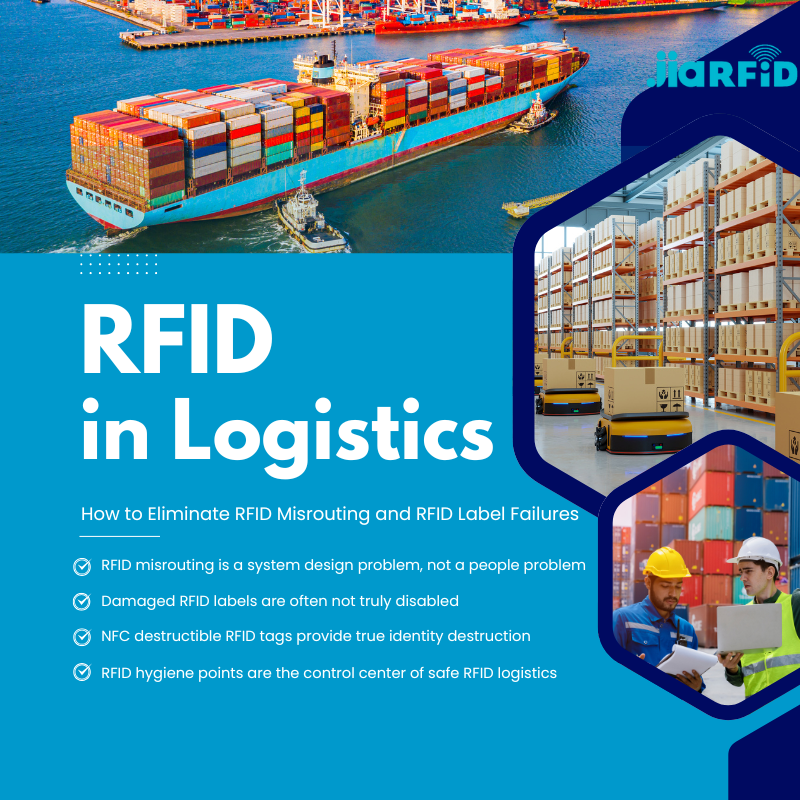
RFID nella logistica: come eliminare gli errori di instradamento RFID e i malfunzionamenti delle etichette RFID
L'RFID nella logistica è molto più di un semplice strumento per velocizzare i processi. È diventato un elemento fondamentale nel funzionamento delle moderne catene di approvvigionamento.

Che cos'è la gestione dei rifiuti RFID
Immaginate una città in cui ogni bidone della spazzatura parla, non letteralmente, ma attraverso un minuscolo chip che comunica al sistema quando è pieno, quando viene svuotato e dove viene portato. Questo è ciò che fa oggi la gestione dei rifiuti RFID.
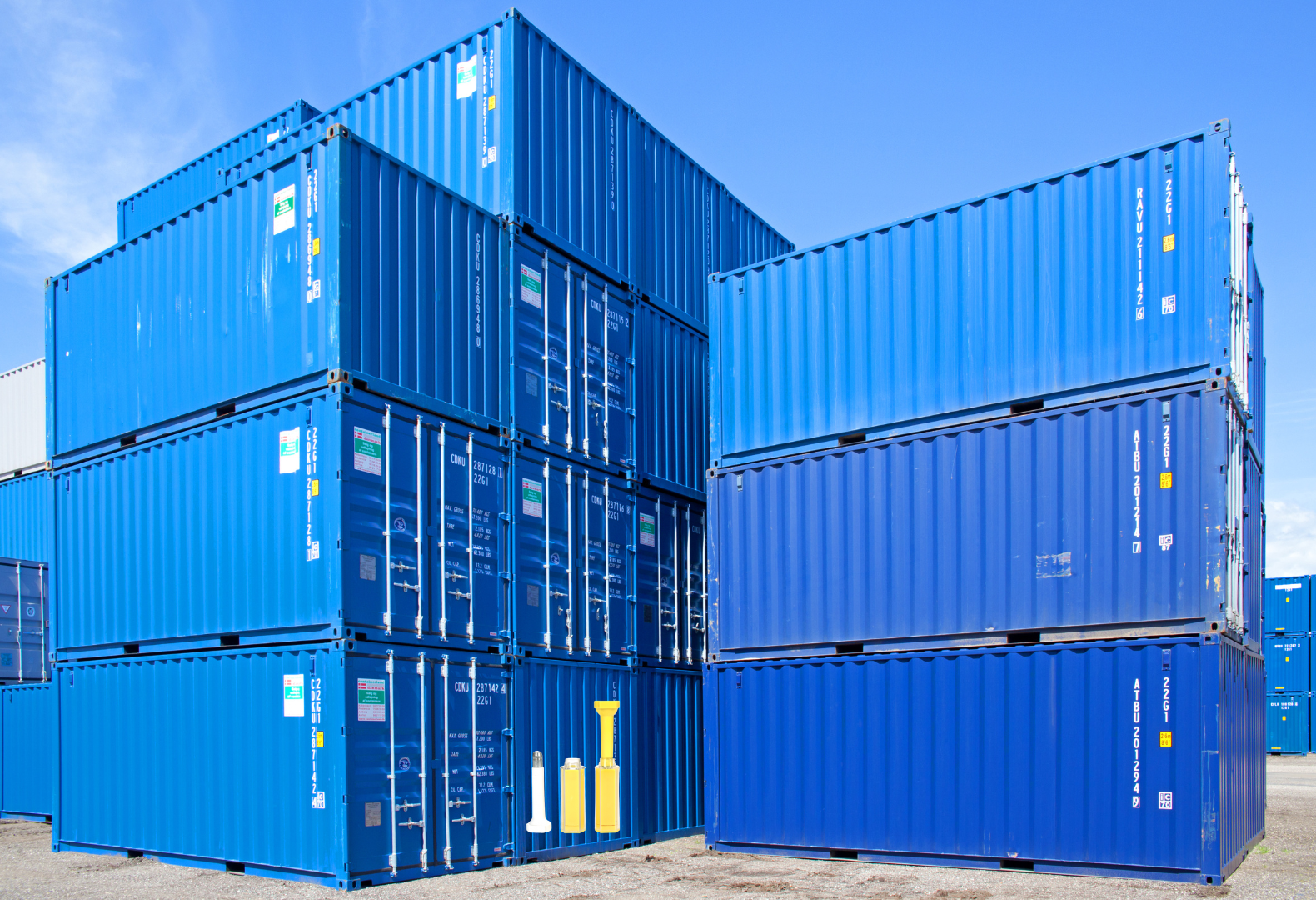
Cosa sono le guarnizioni per bulloni e le loro applicazioni? | Guida completa
Nel commercio globale e nella logistica, i sigilli a bullone svolgono un ruolo cruciale nel garantire la sicurezza e la conformità del carico. Questi piccoli ma potenti dispositivi sono progettati per bloccare container, rimorchi e porte di carico con un meccanismo antimanomissione.
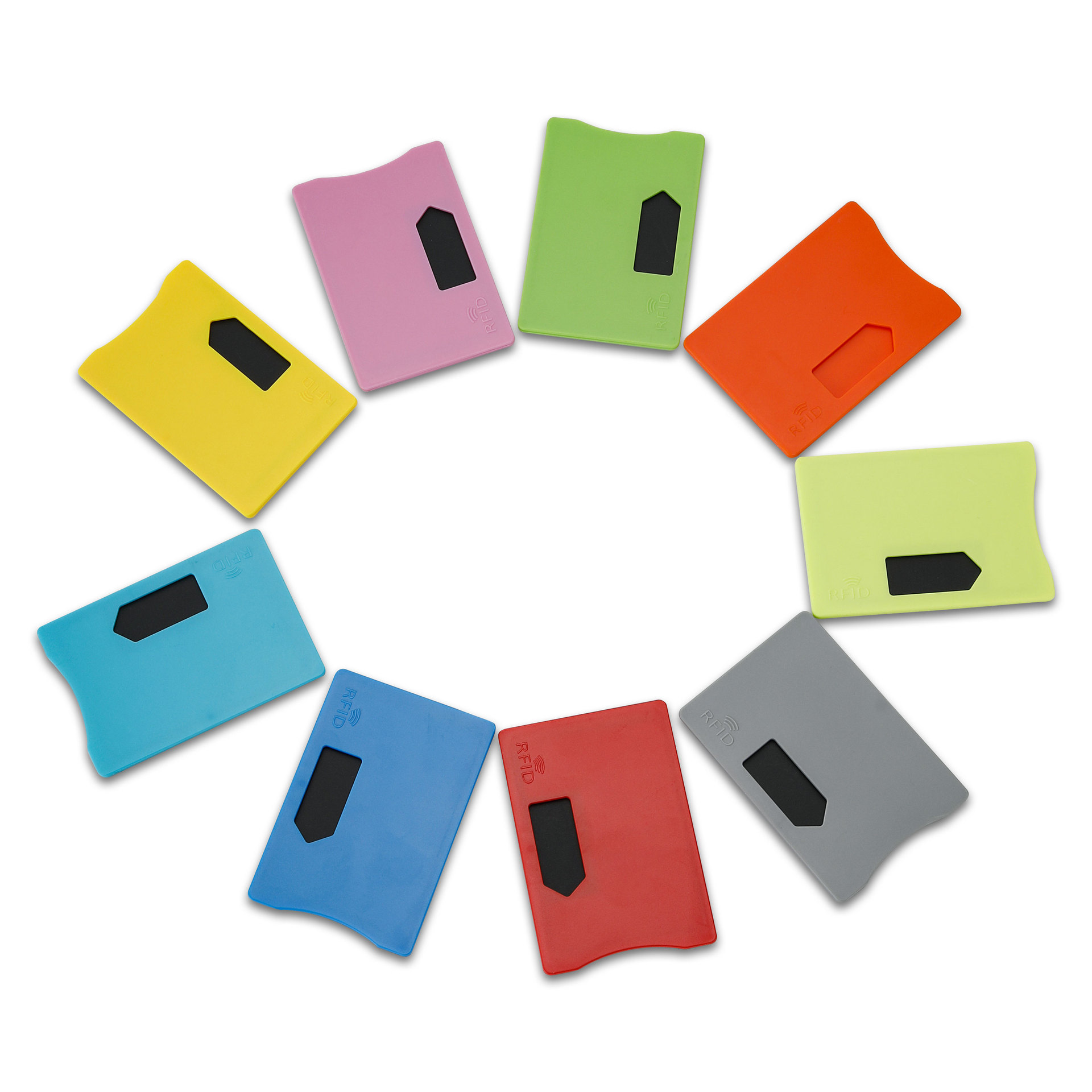
Che cos'è un RFID Card Protector? Vantaggi, casi d'uso e guida all'acquisto
La tecnologia RFID (Radio Frequency Identification) è ovunque: nelle carte di credito, nei badge, nei pass di transito, nelle chiavi delle camere d'albergo e altro ancora. Offre velocità e comodità, ma apre anche la porta a un nuovo tipo di furto digitale chiamato "skimming". È qui che entra in gioco una protezione per carte RFID.

Braccialetti RFID per eventi: Guida all'acquisto di prodotti sfusi per gli organizzatori
I braccialetti RFID per eventi stanno diventando la soluzione ideale per gli organizzatori che hanno bisogno di ingressi più rapidi, prevenzione delle frodi e pagamenti senza contanti a concerti, festival e impianti sportivi. A differenza dei biglietti cartacei o dei codici QR, questi braccialetti intelligenti utilizzano chip incorporati per semplificare l'accesso, proteggere le transazioni e migliorare l'esperienza degli ospiti.
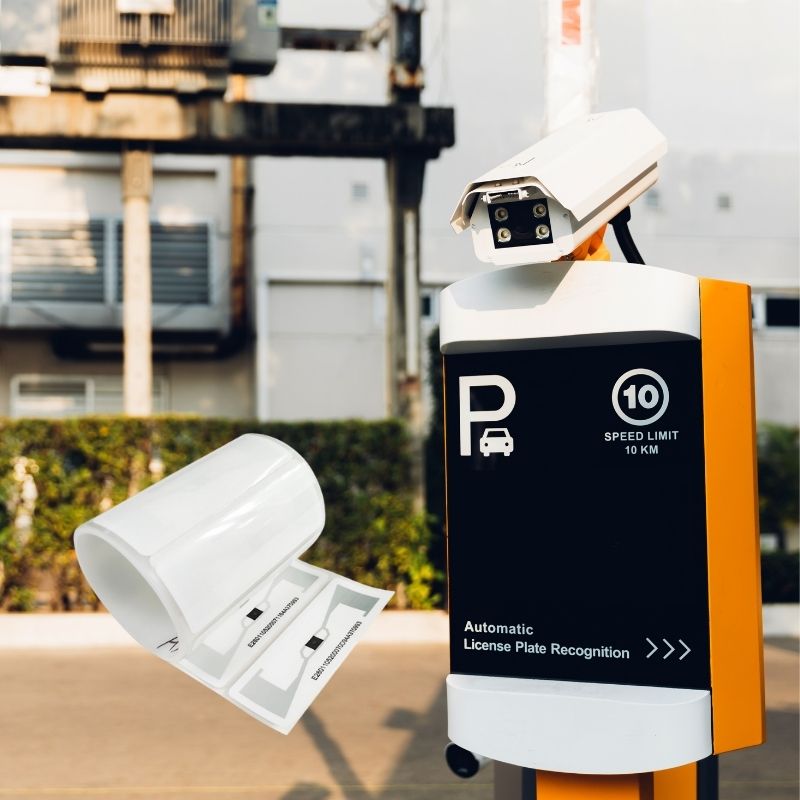
Come l'etichetta RFID sul parabrezza migliora il controllo degli accessi dei veicoli e i sistemi di pedaggio
Nel mondo frenetico di oggi, l'identificazione dei veicoli deve essere rapida, sicura e senza contatto. Un'etichetta RFID sul parabrezza offre proprio questo: un modo affidabile per gestire i pedaggi, i parcheggi e gli accessi senza fermare i veicoli.

